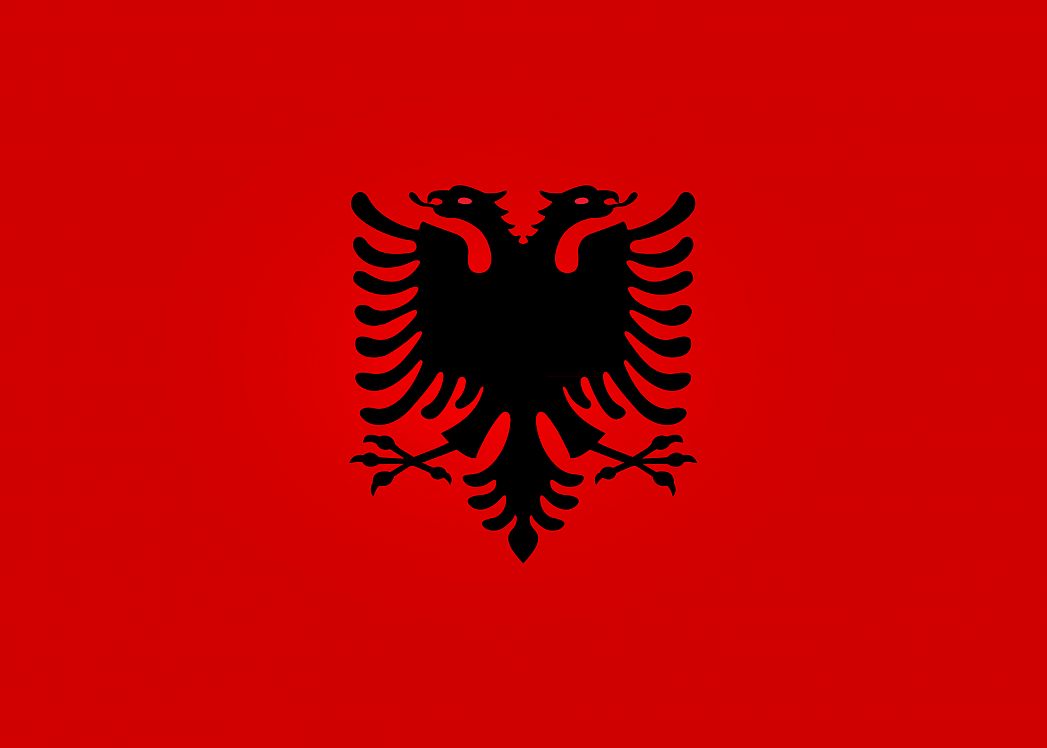The Albanian flag consists of a silhouetted black double-headed eagle on a red background. It is officially known as Flamuri Kombëtar but bears the nickname flamur e Skënderbeut (the flag of Skanderbeg). The first version of the Albanian flag was adopted on November 28, 1443. The current version was made the official flag on 7 April 1992. There have been several variants of the Albanian flag, but nearly all featured the double-headed eagle.
The red color on the flag represents valor, bravery and the strength of the Albanian people. The double-headed eagle represents the sovereignty of Albania. The double-headed eagle is also found in the country's coat of arms.
The current version of the Albanian flag can be traced to the 15th century when Prince George Kastrioti (Skanderbeg) raised his flag in defiance of the Ottoman Empire. His kingdom resisted the Empire’s rule until he died in 1468. The flag he raised bore a black eagle on a red background. In the late 19th century, Albanian Immigrants Faik Konitsa who lived in Belgium and Querim Panarity who resided in the U.S popularized Skanderbeg and revived the flag as a symbol of unity among Albanians. On November 28, 1912, Albania proclaimed independence from the Ottoman empire and the flag became popular among Albanians although several other variants were also unofficially used. On April 7, 1992 the flag was officially adopted as the national flag.
All previous versions of the Albanian flags consisted of the black eagle on a red background. However, the difference was brought about by deformations of the double-headed eagle. Between 1920-1925 the eagle had yellow beaks and feet. Between 1928–1939 the flag had a crown on top of the eagle. The longest serving flag of modern Albania consisted of the two-headed eagle on a red background and a five-sided star on the upper part - it lasted between 1946–1992 before it was replaced by the current flag.
This page was last modified on May 1st, 2018
More on Graphicmaps

Published on 2019-11-06
What is a Trade Embargo?

Published on 2019-11-04
Which Two Countries Used to Have the Same Flag?

Published on 2019-09-16
What Is the Only Two-Sided State Flag?

Published on 2019-09-16
Which Country Flag Looks Like the Texas Flag?

Published on 2019-08-29
Flags That Resemble the US Flag

Published on 2019-08-20
